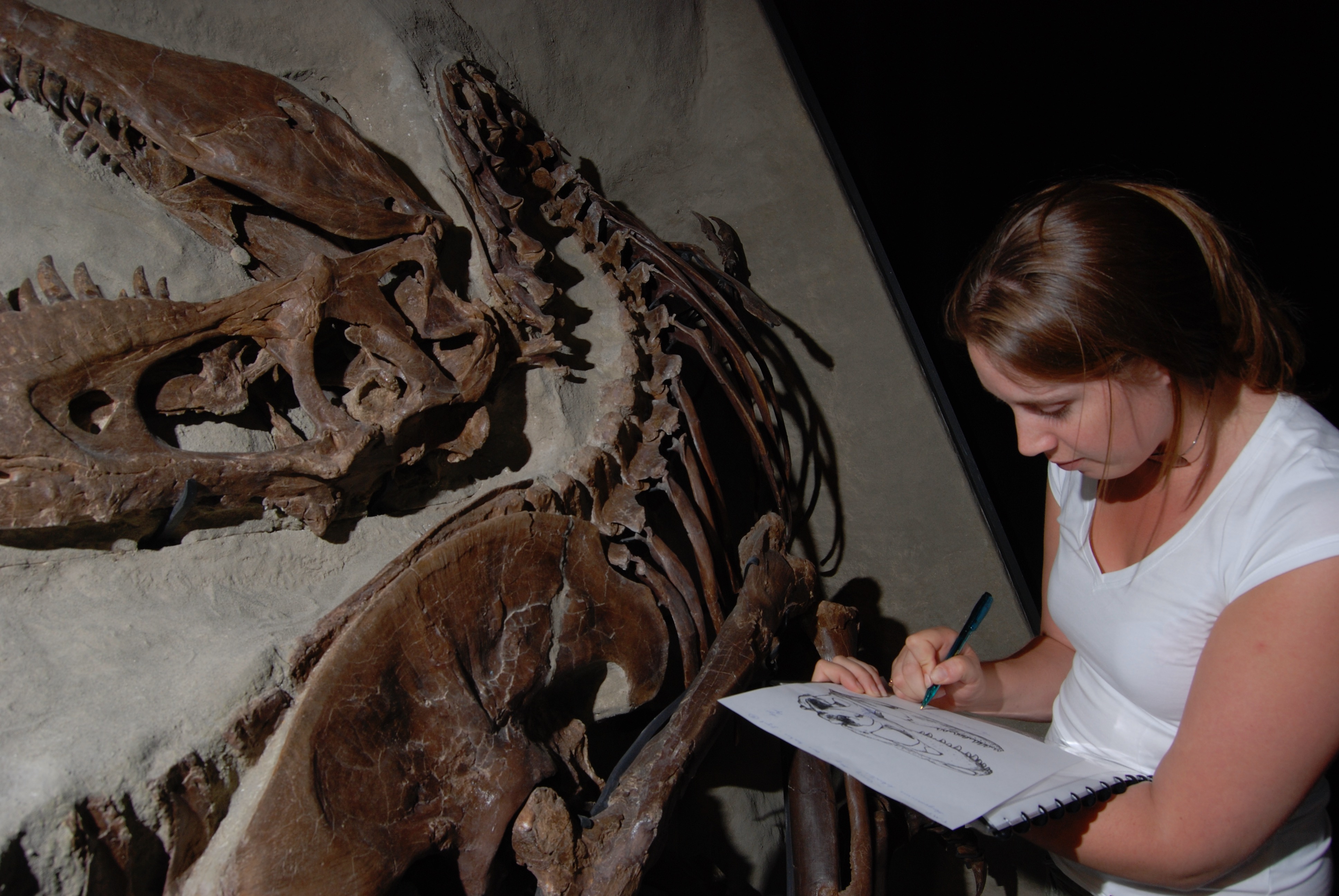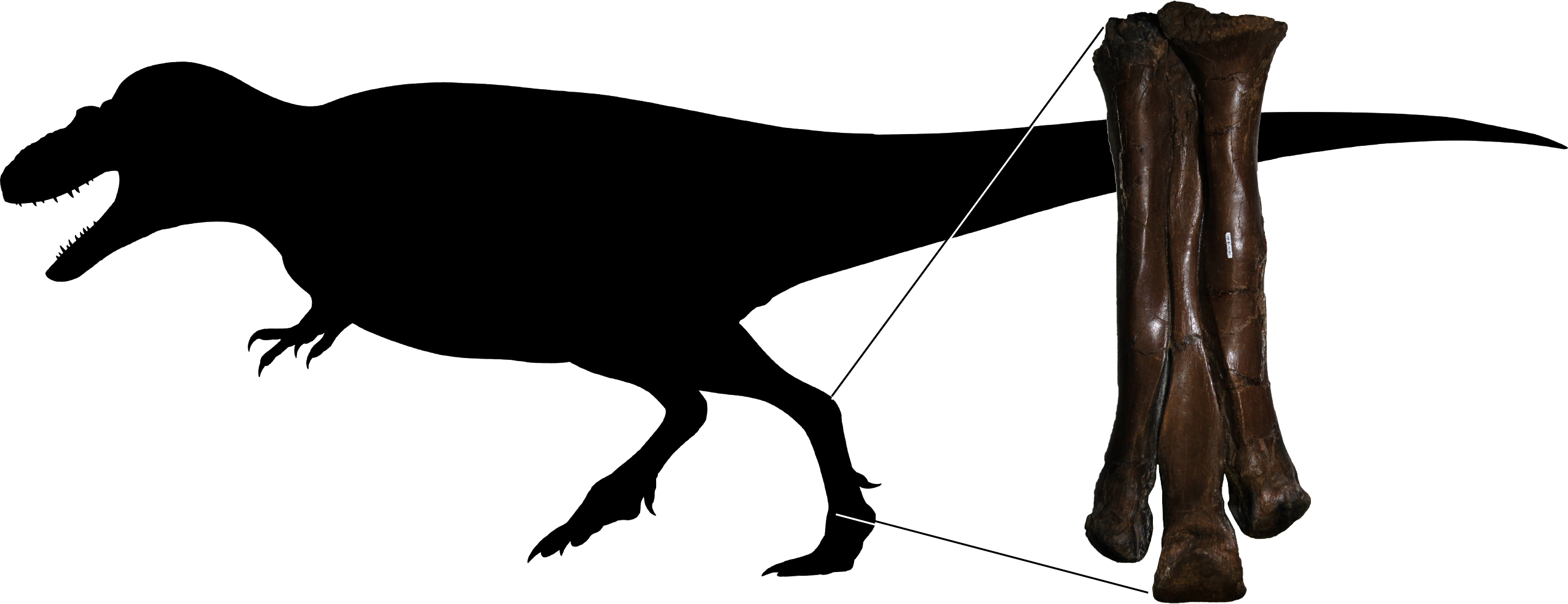UMD Paleontologist Thomas R. Holtz, Jr. Helps Unravel Microscopic Mysteries of Supercharged Tyrannosaurus Rex Feet
New study sheds light on the specialized binding ligaments that made T. rex such a fearful and fast predator
How did Tyrannosaurus rex catch its food? Looking at T. rex’s fossilized skull, the answer may seem obvious: monstrous jaws and sharp teeth capable of delivering a multi-ton bite force. But tyrannosaurs relied on more than just their heads to snag prey, according to a team of researchers including University of Maryland vertebrate paleontologist Thomas R. Holtz, Jr. Their study, published in Vertebrate Anatomy Morphology Palaeontology, revealed that tyrannosaurs had unique ligaments that supercharged their feet, allowing them to move swiftly across vast distances.

“People have long been attracted to the awesome power and ridiculously small arms of Tyrannosaurus rex and its kin, but the legs—and especially the feet—of the tyrant dinosaurs were also highly specialized,” said Holtz, a principal lecturer in UMD’s Department of Geology. “This new study helps to show that even on a microscopic level, tyrannosaurs were adapted for both long-distance running and rapid acceleration.”
Proportionally, tyrannosaurs had longer feet than any other big carnivorous dinosaur, but the uniqueness of their feet didn’t stop at their long stride. The large middle bone of their foot is triangular when viewed from the front or cross-section, and it tapers to a narrow ankle—a feature that Holtz dubbed “arctometatarsus” in the 1990s. Previous studies by Holtz, Eric Snively of Oklahoma State University and other researchers have shown that a long arctometatarsus enabled relatively fast forward locomotion, but the reason for this unusual shape remained a mystery.
New research by Holtz, Snively and co-authors tested the hypothesis that large ligaments strengthened the soles of tyrannosaurs’ feet near the toes in a way that would have been unique among large dinosaurs and not present in any modern animal.
University of Calgary researcher Anthony Russell demonstrated that the pull of ligaments and tendons can cause tyrannosaurs’ bones to extrude, leaving behind rough, undulating surfaces on the bone. Snively identified rough surfaces in tyrannosaur fossils, but it remained possible that unfossilized cartilage or quick growth might be responsible for the rugged terrain.
Lead author Lara Surring, of Alberta Health Services, realized that researchers could test for ligaments by training a scanning electron microscope (SEM) on the rough surfaces where bones touch in the tyrannosaur Gorgosaurus. The authors then extracted thin, translucent sections of metatarsal bones from a tyrannosaur and a “control” dinosaur, the small carnivore Coelophysis.
SEM revealed pits in the rough bone surface, which matches tight ligament attachments in modern animals. The internal bone structure of the tyrannosaur showed mineralized ligaments that anchored the sinews within the bone. Coelophysis lacked such strong attachments.
Researchers discovered even more ligament attachments that bound the foot together, both externally and internally. The authors’ methods also enabled them to rigorously test for the presence of soft tissues in fossil animals like tyrannosaurs. Soft tissues like ligaments and tendons are critical to how the skeleton functions, but they are rarely preserved in fossils. Finding evidence of these tissues helps elucidate how these ancient animals operated as living beings.
“With external and internal microscopy revealing its faded soft tissues, one small step for a tyrannosaur turns into a modest leap for understanding a vivid past,” Snively said.

Aside from answering a longstanding question, the intricacies of tyrannosaur feet also hold relevance for human health. People are among the best long-distance walkers and runners of any animal today, but ligament and tendon injuries are common, comprising an estimated 30-50% of sporting injuries.
Over-exertion can pull tendons and ligaments, so understanding how these structures attach to bone—even in extinct animals like dinosaurs—can help humans avoid such injuries.
“We are hopeful that learning how tyrannosaurs made skeletal adjustments to stay functional at the limits of animal size will eventually help us to evaluate and improve human skeletons after injury or aging,” Surring said. “This research is one more step in that direction.”
###
Their research paper, “Consilient evidence affirms expansive stabilizing ligaments in the tyrannosaurid foot,” was published in Vertebrate Anatomy Morphology Palaeontology on Nov. 28, 2022.
This article is adapted from text provided by Oklahoma State University.







